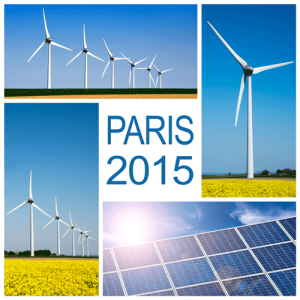 The good news from last year’s COP21 meetings in Paris was a breath of fresh air. It was darkly ironic, though, that while President Xi Jinping delivered his visionary speech about what needs to be done, Beijing choked under a cloud of pollution. In contrast to the 2009 COP talks in Copenhagen, when China defended its right to equal development opportunities—and the right to pollute that goes along with it—this time around really was different: China’s delegates in Paris accepted real compromises. This constructive stance resulted from the country’s evolving environmental and economic realities. In a welcome development, the Paris Agreement aligns with China’s top-level reform agenda, and influential Chinese industry interests also see business opportunities. But Chinese leaders still have to overcome the inertia of local government and entrenched SOEs, which is no small task.
The good news from last year’s COP21 meetings in Paris was a breath of fresh air. It was darkly ironic, though, that while President Xi Jinping delivered his visionary speech about what needs to be done, Beijing choked under a cloud of pollution. In contrast to the 2009 COP talks in Copenhagen, when China defended its right to equal development opportunities—and the right to pollute that goes along with it—this time around really was different: China’s delegates in Paris accepted real compromises. This constructive stance resulted from the country’s evolving environmental and economic realities. In a welcome development, the Paris Agreement aligns with China’s top-level reform agenda, and influential Chinese industry interests also see business opportunities. But Chinese leaders still have to overcome the inertia of local government and entrenched SOEs, which is no small task.
Thanks in part to a new development strategy in response to declining growth expectations, for the first time during the reform era environmental protection is a top policy priority. The new leadership has labelled this ‘ecological civilisation’. And with China now committed to peak carbon dioxide emissions by around 2030, it has not come a moment too soon. We are pleased to recognise this triumph for China’s global institutional voice on a topic that was one of the policy themes outlined during the Fifth Plenum in October, 2015. As its recent bilateral agreements with the US and France also made crucial contributions to the final text adopted in Paris, we hope that this is just the beginning of good things to come.
Specifically, the European Chamber hopes that the Paris Agreement gives added vigour to China’s reform commitments and affords reformers additional leverage with which to pressure SOEs and sub-national governments to fulfill China’s climate targets. This necessitates a rapid reduction in heavy industry as well as ongoing improvements to rates of energy efficiency and clean energy capacity. But this can only happen if provinces and towns—where interest groups are strong—support the implementation of Beijing’s agenda. Needless to say, China’s commitments are already supported by EU businesses, which saw the clear signal in Paris to scale up innovation and investment in climate solutions.
But success is by no means guaranteed. Renewable energy curtailment is widespread: emission reduction policies may prove insufficient for curbing the use of coal in electricity generation, especially if coal prices continue to fall; and leaders may turn back to energy-intensive stimulus measures in an attempt to shore up the economy in the short term. The key to effectively implementing Beijing’s strong climate pledges therefore lies in transparency efforts. Monitoring, reporting and verification (MRV) of emissions and the implementation of climate policies requires both expertise and funding. Data quality and institutional arrangements for MRV also have to be upgraded. China’s last submission of national inventories was in 2012, and only included emissions data from 2005. Chinese authorities now need to monitor and report on the country’s emissions and policies more often and in more detail. Again, local implementation is vital.
By affording regional authorities the ability to approve power stations the Chinese Government has perhaps unwittingly inflated a coal-fired-power bubble. In fact, the China Electricity Council has stated that the current boom in the construction of coal-fired power plants led to a 55 per cent year-on-year increase in their numbers during the first half of 2015.
Greenpeace has endeavoured to explain how this happened,[1] with some of their most important findings presented in China’s Black Bubble on page six of this issue of EURObiz. Specifically, by analysing Environmental Impact Assessment (EIA) applications and approvals from the central and provincial Ministry of Environmental Protection (MEP) websites, Greenpeace found that during the first nine months of last year, 155 coal-fired power plants with a combined capacity of 123 GW, were approved. This is far beyond the number and scale of capacity that has been signed off on in recent years. For example, during 2012, 2013, and 2014, only 33, 41, and 56 plants were approved respectively. Furthermore, this 123 GW of non-renewable energy capacity is on par with the entire power capacity of Italy, one of Europe’s leading industrial heavyweights – all of this in just nine months!
The stark contrast between COP21 commitments and coal-fired capacity again proves just how difficult it is to read China’s political commitments as well as their global implications.
The Chamber will continue to monitor discrepancies and developments.
[1] Is China doubling down on its coal power bubble?, Greenpeace, 2015, <http://www.greenpeace.org/eastasia/publications/reports/climate-energy/climate-energy-2015/doubling-down/>


Recent Comments